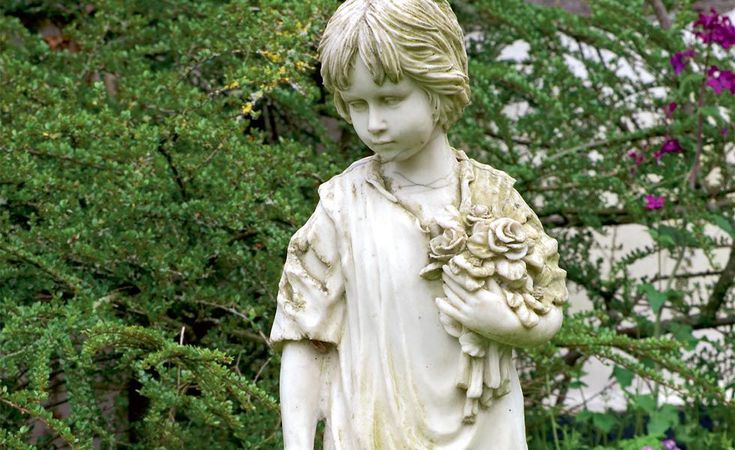Antique stone sculptures are more than decorative pieces—they’re treasured links to history, artistry, and culture. Whether you've inherited a family heirloom or invested in a historic stone piece for your collection or garden, proper care is essential to maintain its integrity and beauty for generations to come. In this blog, we’ll walk you through best practices for cleaning, protecting, and preserving antique stone sculptures without compromising their age-old charm.

1. Understand the Type of Stone
Before any maintenance begins, it’s vital to identify the stone type—be it marble, limestone, sandstone, granite, or another variety. Each stone reacts differently to moisture, temperature, and cleaning agents:
-
Marble and limestone are softer and more porous, making them more vulnerable to weathering and acid-based cleaners.
-
Granite and basalt are dense and durable, tolerating harsher conditions.
-
Sandstone is porous and can absorb moisture easily, leading to algae or mould if left outdoors.
Knowing your sculpture’s material will help you tailor your care approach.

2. Regular Gentle Cleaning
Dust and dirt accumulate over time, especially on outdoor sculptures. However, cleaning antique stone should always be done with the utmost care:
-
Use a soft, dry brush or microfiber cloth to remove surface dust.
-
If needed, lightly dampen the cloth with distilled water—tap water may contain minerals that can damage stone.
-
Avoid abrasive scrubbers, acidic cleaners, or high-pressure washing, which can erode or stain the surface.
For outdoor pieces, cleaning once or twice a year is usually enough unless the environment is particularly harsh.

3. Monitor for Biological Growth
Outdoor sculptures are susceptible to moss, lichen, and algae, especially in shaded or damp areas. While some collectors appreciate the natural patina and aging, unchecked growth can cause staining or surface damage.
-
For removal, use a non-acidic, stone-safe biocide, or consult a conservator.
-
Never scrape or chisel off growths, as this may scratch or gouge the stone.

4. Avoid Harsh Environmental Exposure
Antique sculptures should be protected from excessive water exposure, extreme freeze-thaw cycles, and direct heat:
-
If possible, place sculptures under partial shelter, such as pergolas or garden alcoves.
-
Use elevated bases or plinths to prevent moisture wicking from soil or ground surfaces.
-
Bring fragile pieces indoors during winter or cover them with breathable, waterproof covers.

5. Inspect for Cracks and Wear
Regular inspection helps catch signs of damage early:
-
Look for hairline cracks, flaking, or surface powdering (a sign of stone decay).
-
Monitor for signs of metal corrosion if the statue includes iron elements.
-
Consult a stone conservator if damage appears, as DIY fixes can cause more harm than good.

6. Avoid Coatings and Sealants Without Expert Advice
While it might seem like a good idea to seal antique stone against moisture, many sealants can trap water or alter the appearance of the surface.
-
Only use breathable, stone-safe products if advised by a professional.
-
Never apply wax, polish, or oil to aged stone without clear guidance from a conservator.

7. Keep Indoor Sculptures in a Stable Environment
For antique stone sculptures displayed indoors:
-
Maintain a consistent humidity (ideally between 40–60%) to prevent cracking or expansion.
-
Avoid placing them near heat sources or in areas with frequent temperature fluctuations.
-
Display them in low-traffic areas to avoid accidental bumps or damage.

8. Document and Maintain Records
Antique pieces often come with stories, provenance, or appraisal documentation. Keep a record of:
-
Photos from different angles.
-
Condition reports over time.
-
Any restoration or professional conservation work done.
This documentation is valuable not only for insurance purposes but also for future caretakers or collectors.
Conclusion
Caring for antique stone sculptures is an act of respect for the craftsmanship and history they represent. With regular, gentle maintenance and a keen eye for early signs of wear, you can ensure these timeless pieces continue to captivate and inspire. When in doubt, always consult a professional conservator—preservation is as much about knowing when not to act as it is about what action to take.
